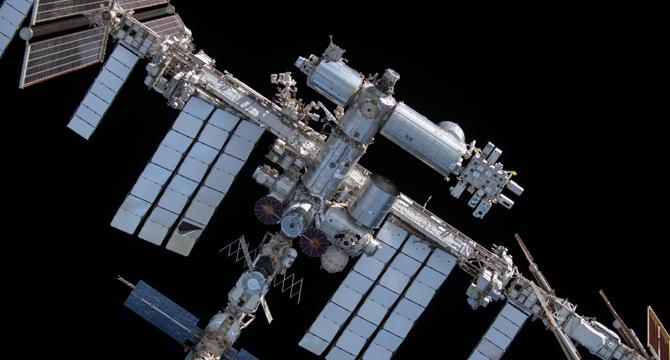Nasa
1M
228

Image Credit: Nasa
Science in Orbit: Results Published on Space Station Research in 2024
- NASA and its partners have conducted over 4,000 research investigations on the International Space Station, leading to 4,400 research publications, with 361 published in 2024 alone.
- Research on the space station advances technology on Earth and prepares for future space exploration missions.
- Key findings include the Microgravity Investigation of Cement Solidification, JAXA Colloidal Clusters, and Optical Imaging of Bubble Dynamics on Nanostructured Surfaces.
- The Microgravity Investigation of Cement Solidification uses AI to analyze cement samples formed in microgravity for potential applications in civil engineering and manufacturing.
- The JAXA Colloidal Clusters research focuses on pyramid-shaped clusters with applications in optical and laser communications systems.
- NASA's study on bubble dynamics reveals insights into bubble growth in microgravity that can improve thermal cooling systems and sensors.
- ESA's Cytoskeleton investigation explores cellular responses to space, providing insights into aging processes and potential countermeasures for astronaut health.
- The Canadian Space Agency's Wayfinding study examines spatial awareness in astronauts, revealing impacts of microgravity on spatial processing regions of the brain.
- The Mini-EUSO telescope project by Roscosmos-ESA-Italian Space Agency aids in detecting space debris and meteors to enhance space activity safety.
- Research on the ISS in 2024 has led to significant contributions in various fields, offering insights into space-based technology and human health in space.
Read Full Article
13 Likes
For uninterrupted reading, download the app